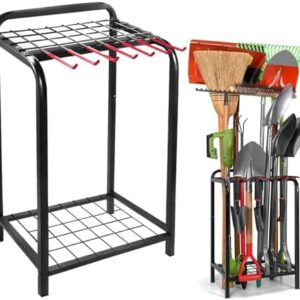When we think of our gardens, we often imagine a peaceful and serene oasis where we can escape from the hustle and bustle of everyday life. But what many people don’t realize is that lurking beneath the surface are hidden dangers that can wreak havoc on our beloved plants. Plant pests and diseases are a common problem that can be difficult to detect and even harder to eradicate. In this article, we will explore some of the most common plant pests and diseases that may be lurking in your garden, and provide you with tips on how to prevent and treat them.
One of the most common plant pests that gardeners face are aphids. These tiny insects feed on the sap of plants, causing them to become weak and susceptible to disease. Aphids can be identified by their small size and pear-shaped bodies, and are typically found on the underside of leaves. If left untreated, aphids can quickly multiply and infest your entire garden. To prevent an aphid infestation, it is important to regularly inspect your plants for signs of these pests and to remove them by hand or with a strong stream of water.
Another common plant pest that can cause serious damage to your garden are spider mites. These tiny pests feed on the sap of plants, leaving behind a fine webbing that can suffocate and kill your plants. Spider mites are difficult to detect as they are very small and often hide on the underside of leaves. To prevent a spider mite infestation, it is important to regularly inspect your plants for signs of webbing and to treat any affected plants with a miticide.
In addition to pests, plant diseases can also pose a significant threat to your garden. One of the most common plant diseases is powdery mildew, which is characterized by a white, powdery substance that appears on the leaves of plants. Powdery mildew thrives in warm, humid conditions and can quickly spread from plant to plant if left untreated. To prevent powdery mildew, it is important to provide good air circulation around your plants and to avoid overhead watering, which can create the moist conditions that powdery mildew thrives in.
Another common plant disease that can wreak havoc on your garden is blight. Blight is a fungal disease that causes dark, sunken lesions to appear on the leaves, stems, and fruit of plants. Blight is highly contagious and can spread rapidly through your garden if not treated promptly. To prevent blight, it is important to practice good garden hygiene by removing and destroying infected plants and avoiding overhead watering, which can help prevent the spread of the disease.
While plant pests and diseases can be a serious threat to your garden, there are steps you can take to prevent and treat them. One of the most important things you can do is to practice good garden hygiene by regularly inspecting your plants for signs of pests and diseases, and removing and destroying any affected plants. It is also important to provide your plants with the proper care they need, such as watering and fertilizing them appropriately, to help keep them healthy and strong.
In addition to practicing good garden hygiene, there are also a variety of organic and chemical treatments that can help prevent and treat plant pests and diseases. Organic treatments, such as neem oil and insecticidal soap, can be effective at controlling pests without harming beneficial insects. Chemical treatments, such as fungicides and insecticides, can also be effective at controlling pests and diseases, but should be used with caution and according to the label instructions.
In conclusion, plant pests and diseases are a common problem that can pose a serious threat to your garden. By practicing good garden hygiene, providing your plants with the proper care they need, and using organic and chemical treatments when necessary, you can help prevent and treat these hidden dangers lurking in your garden. Remember to stay vigilant and proactive in caring for your plants, and your garden will thrive for years to come.






